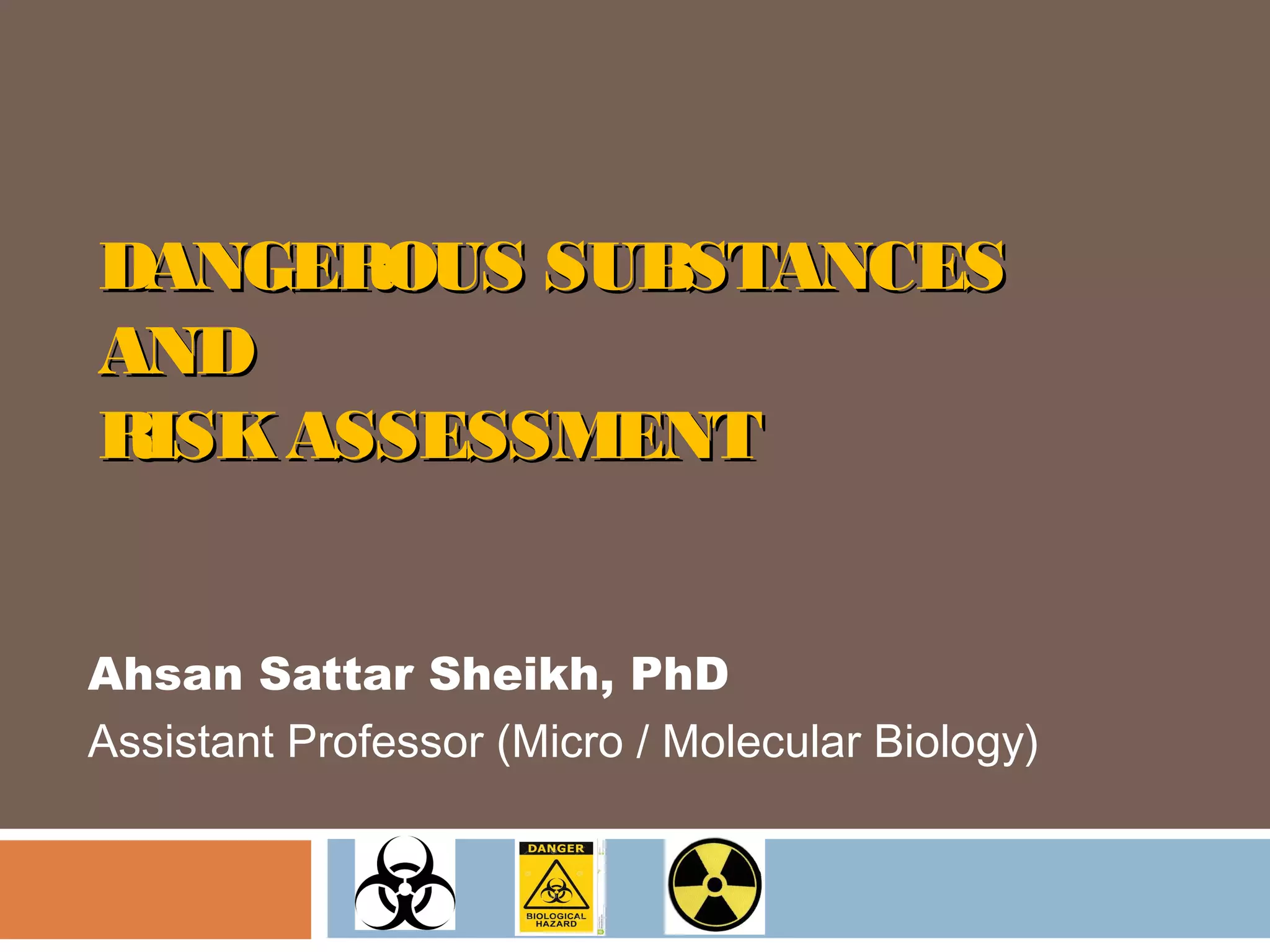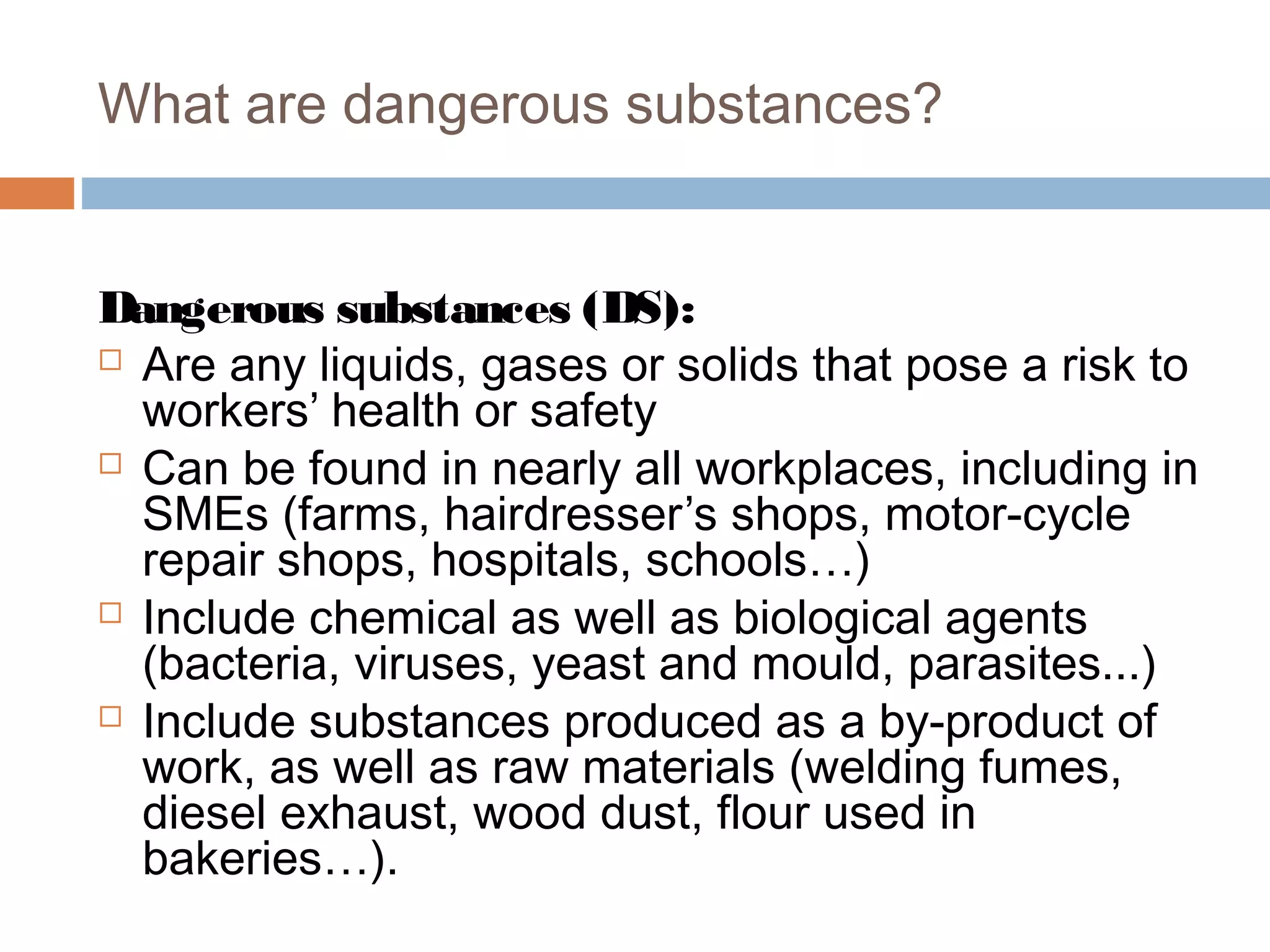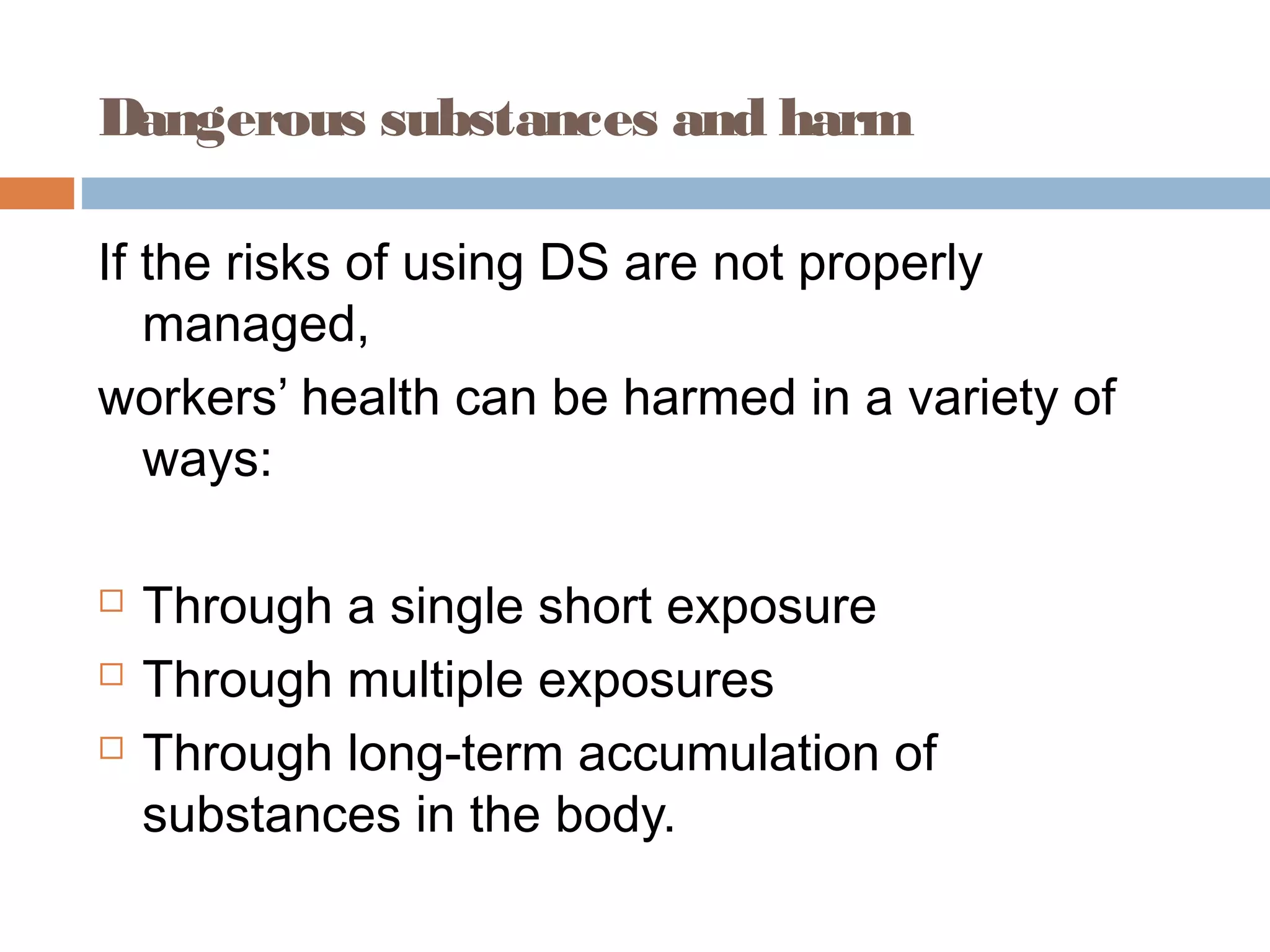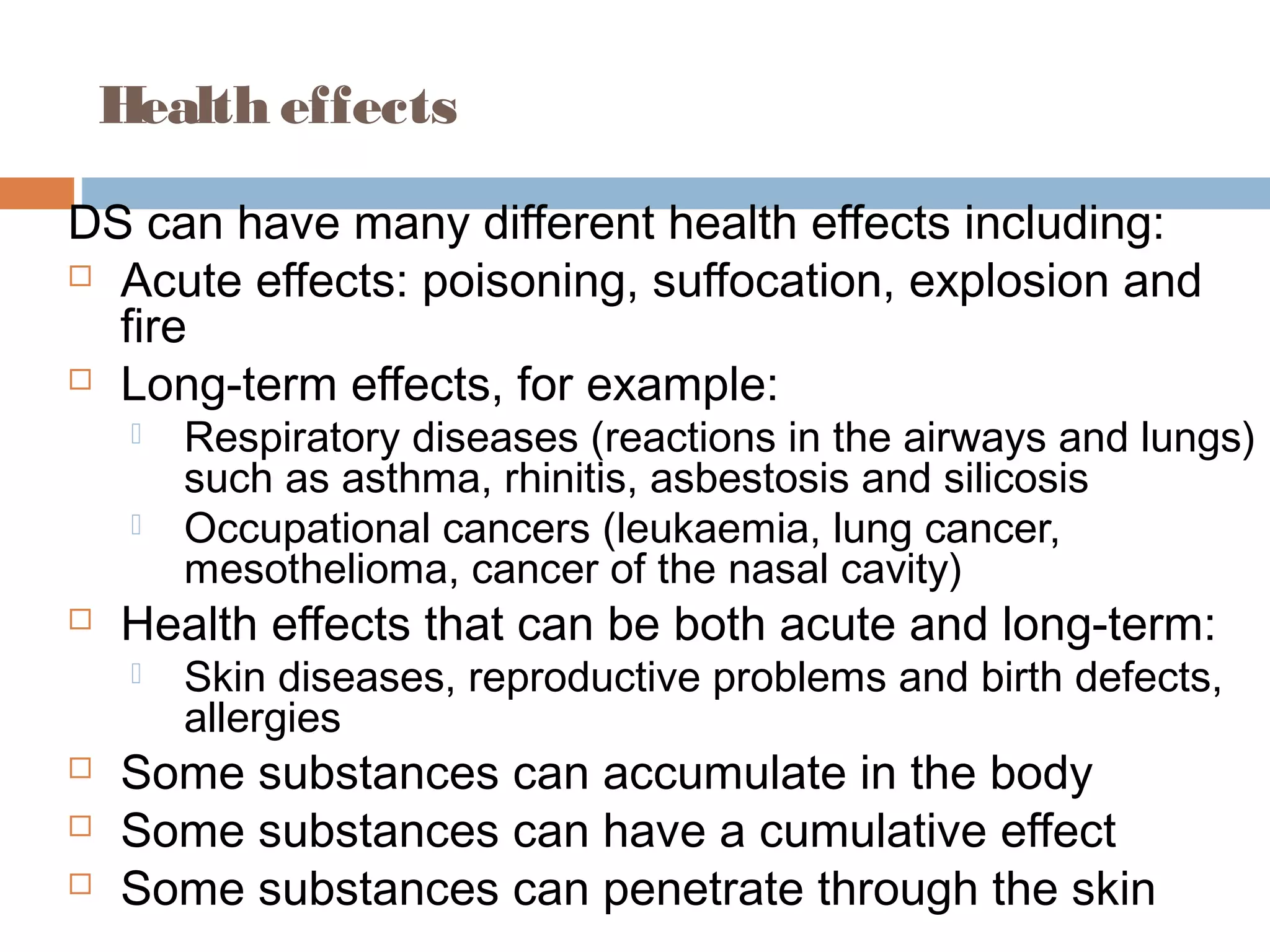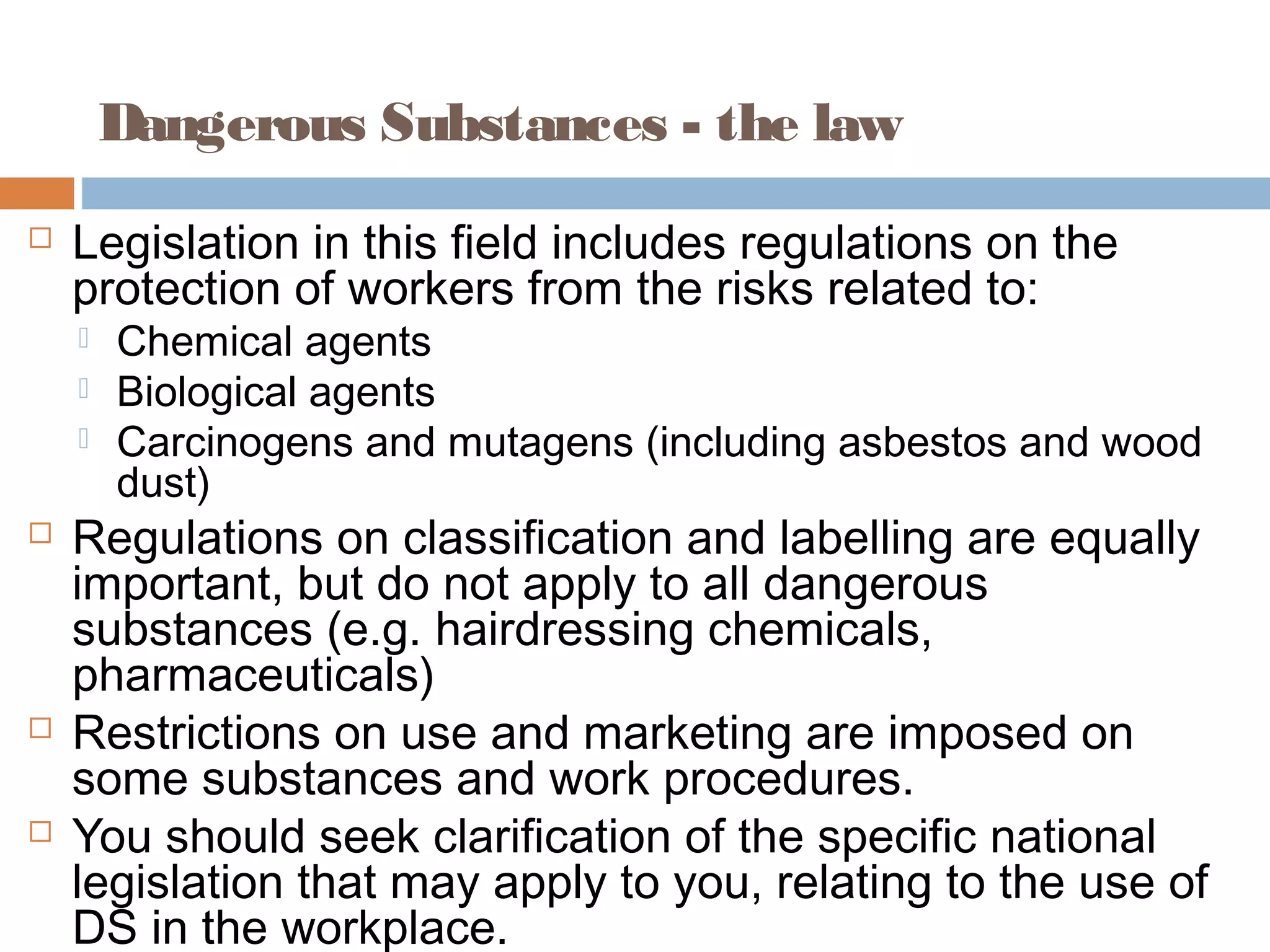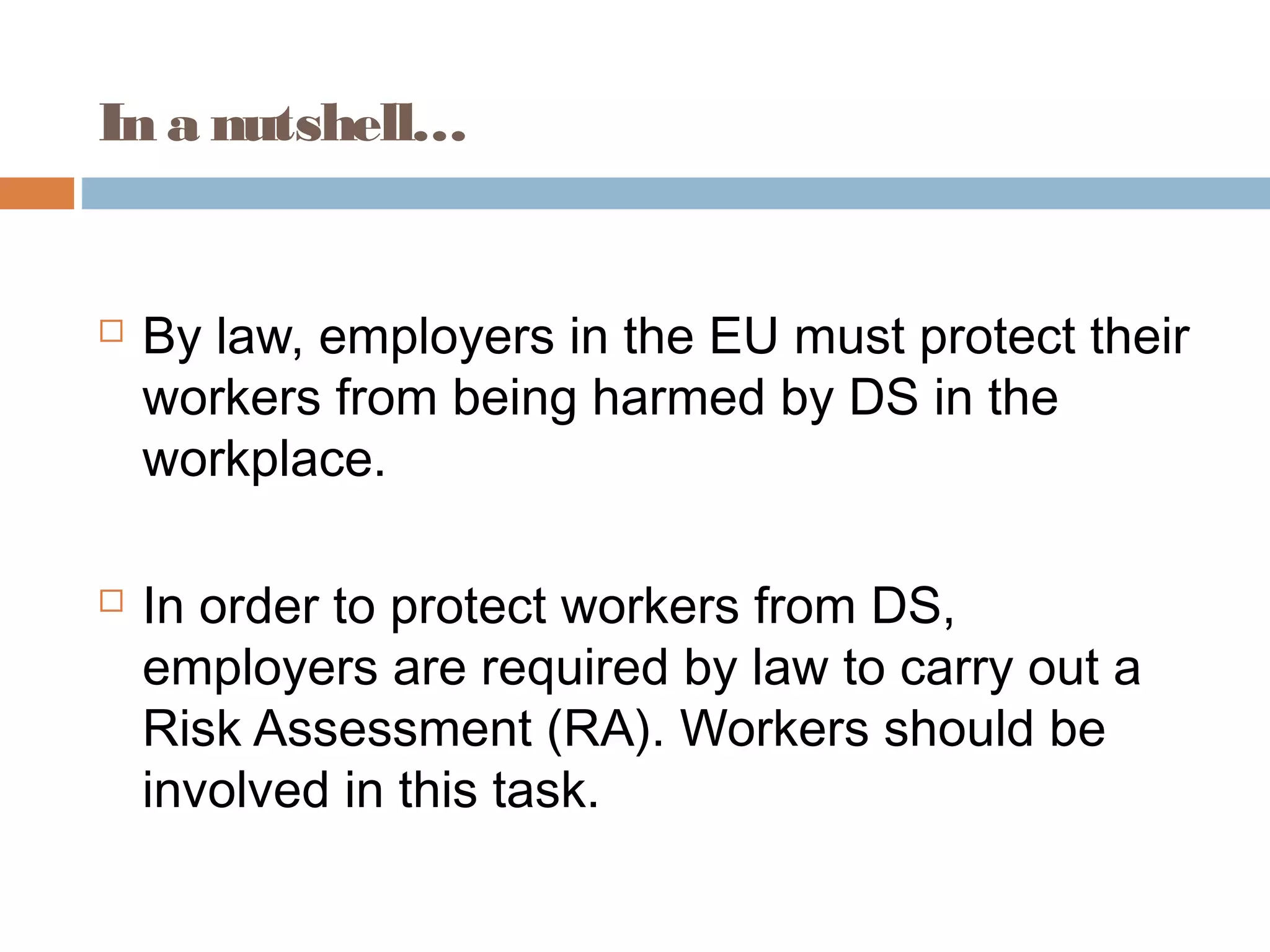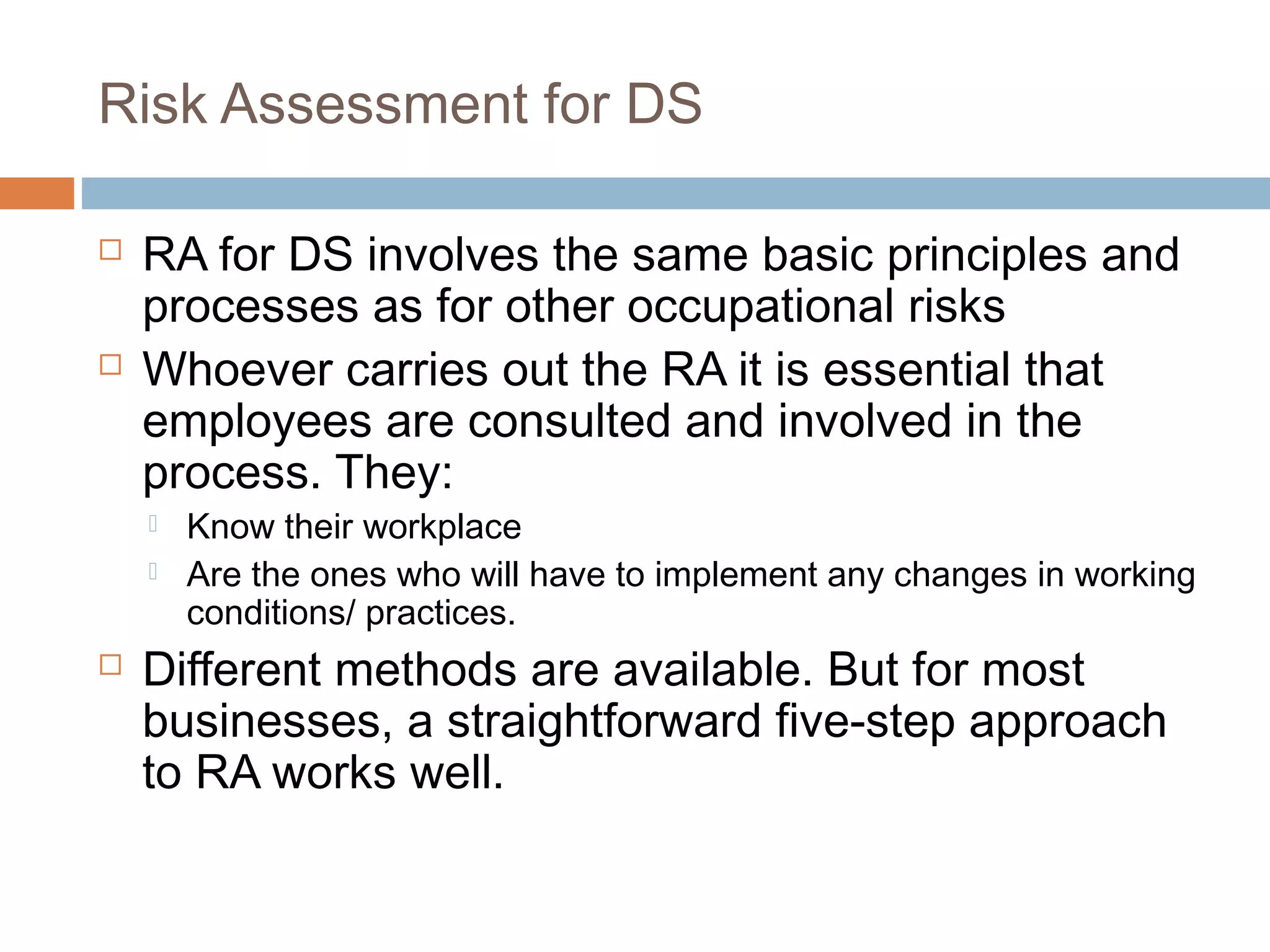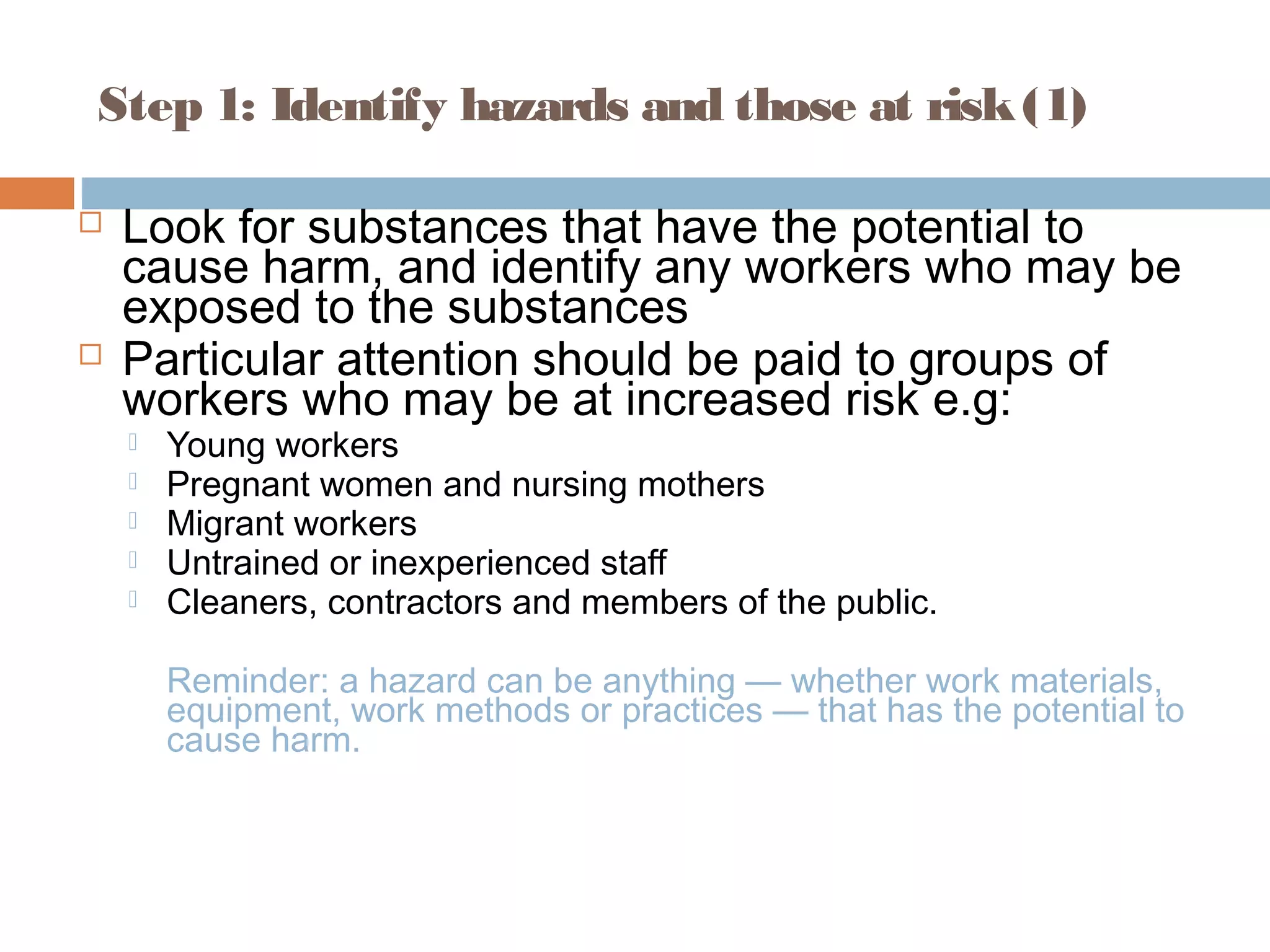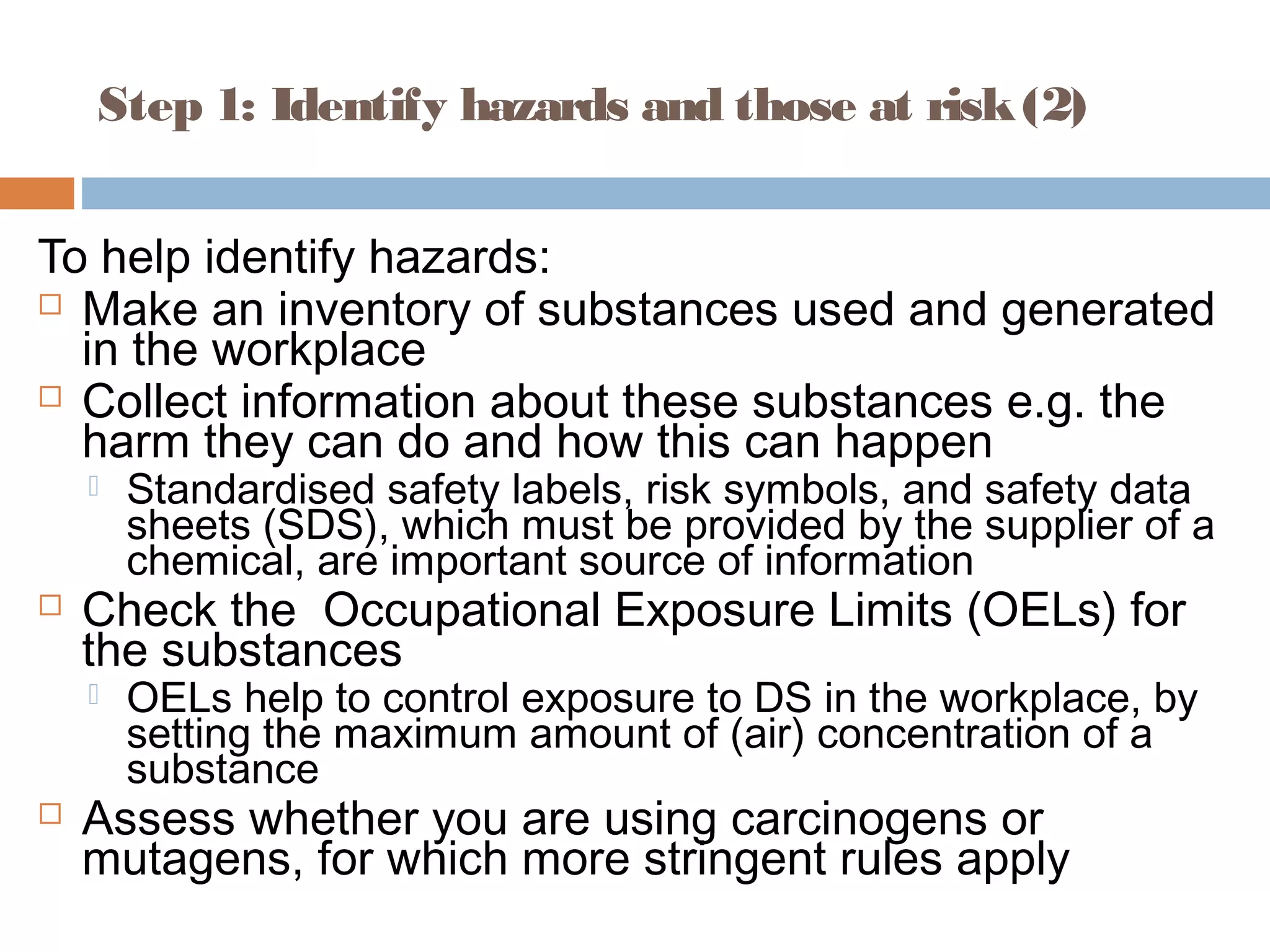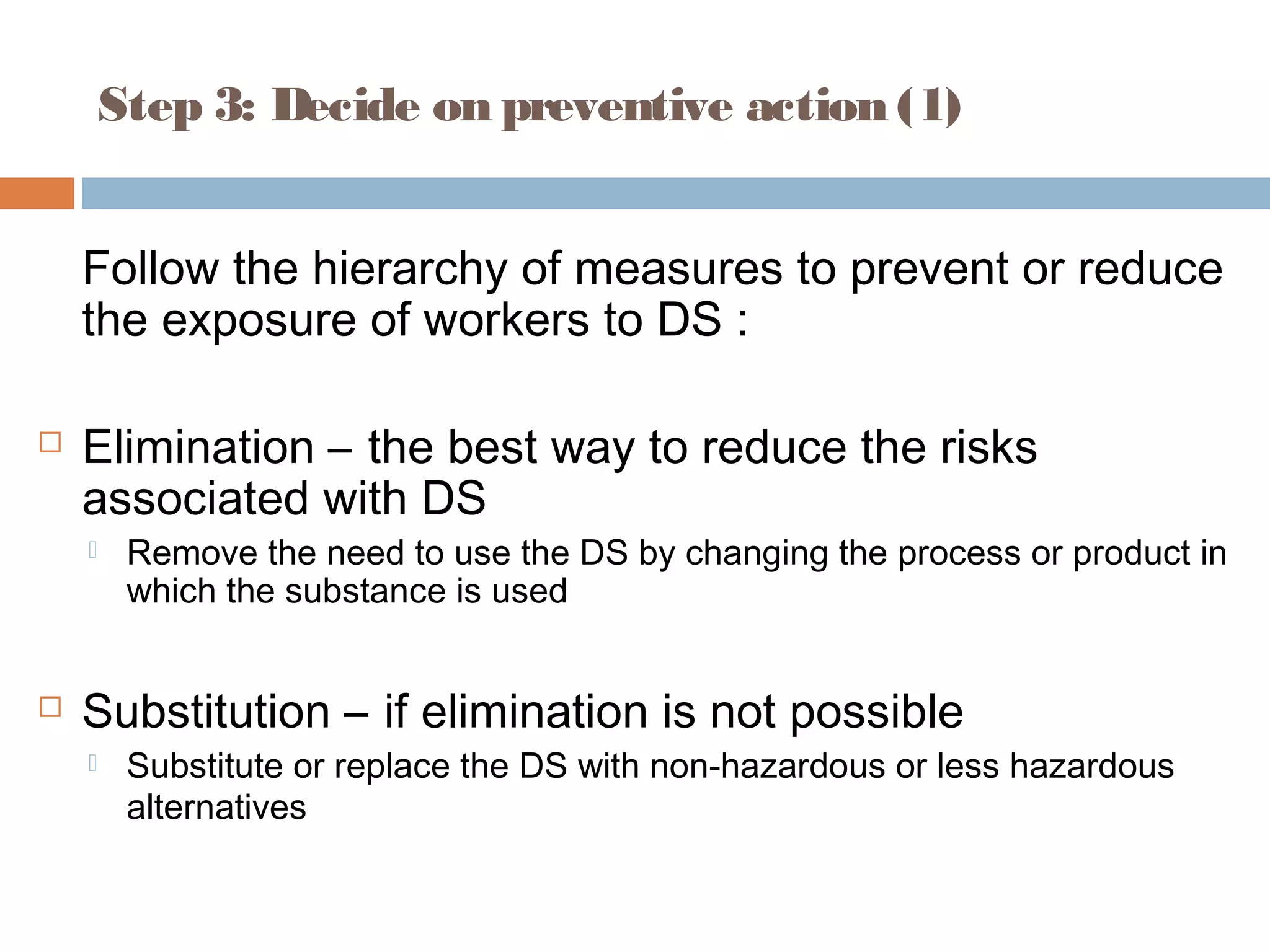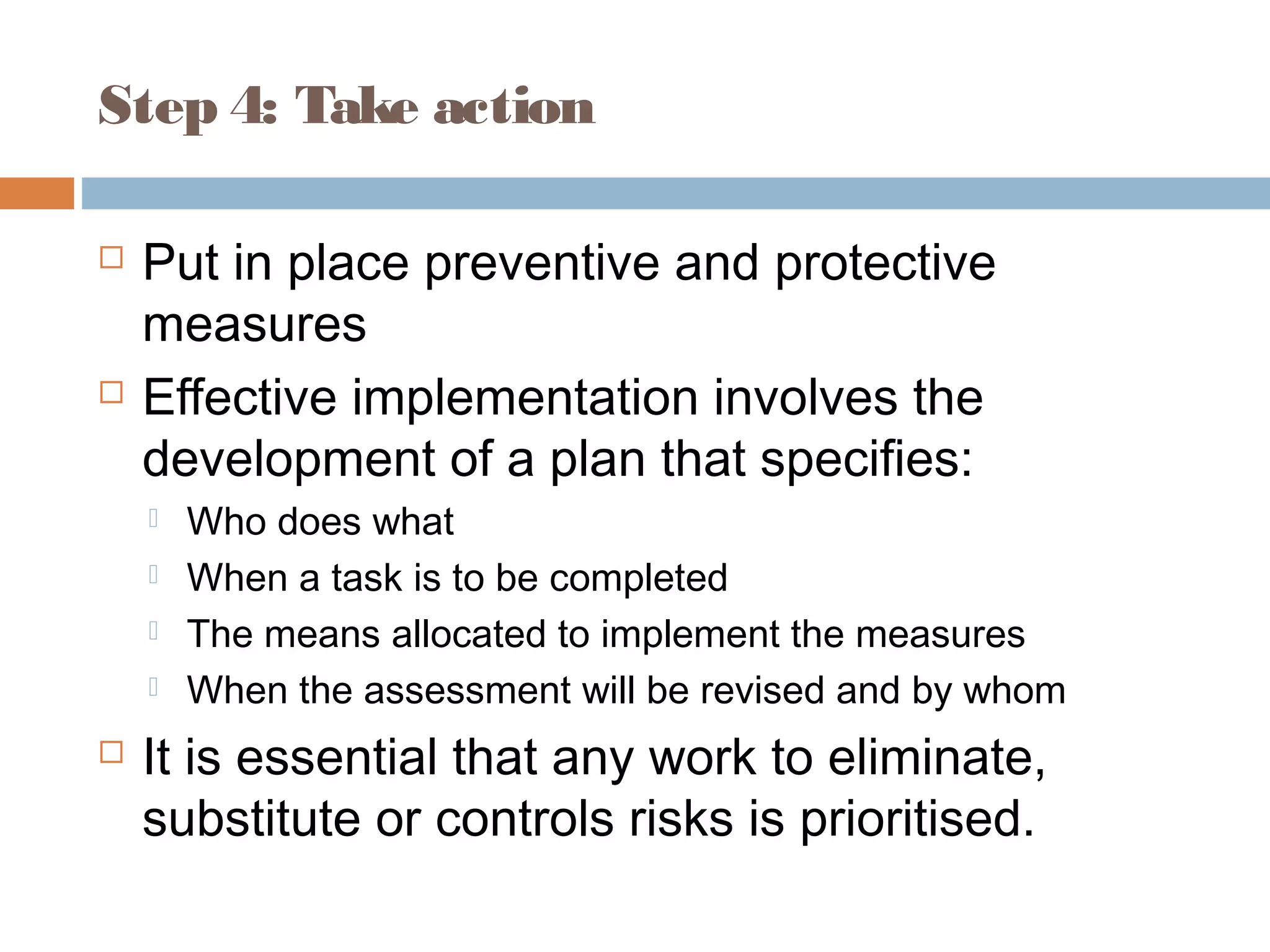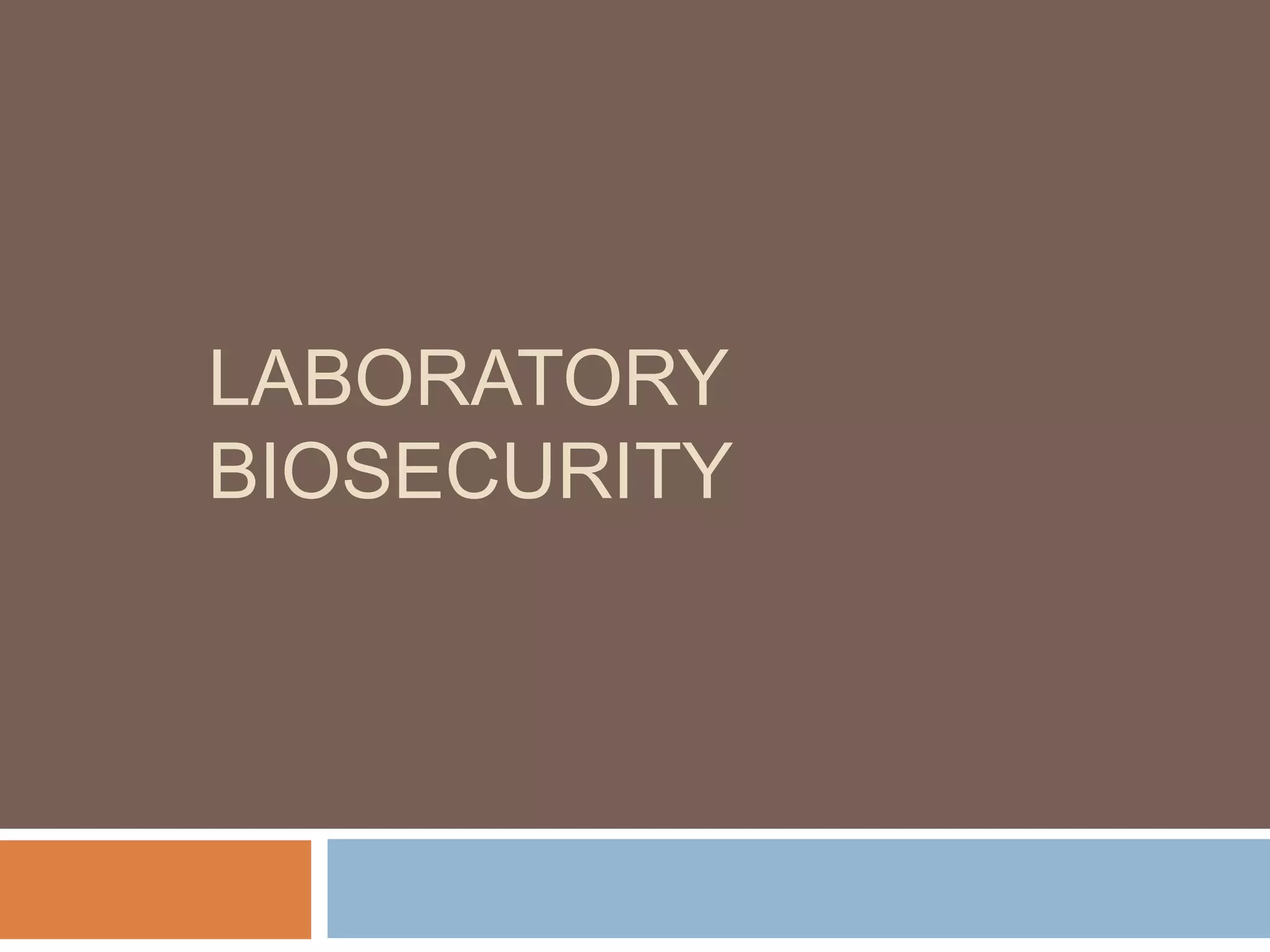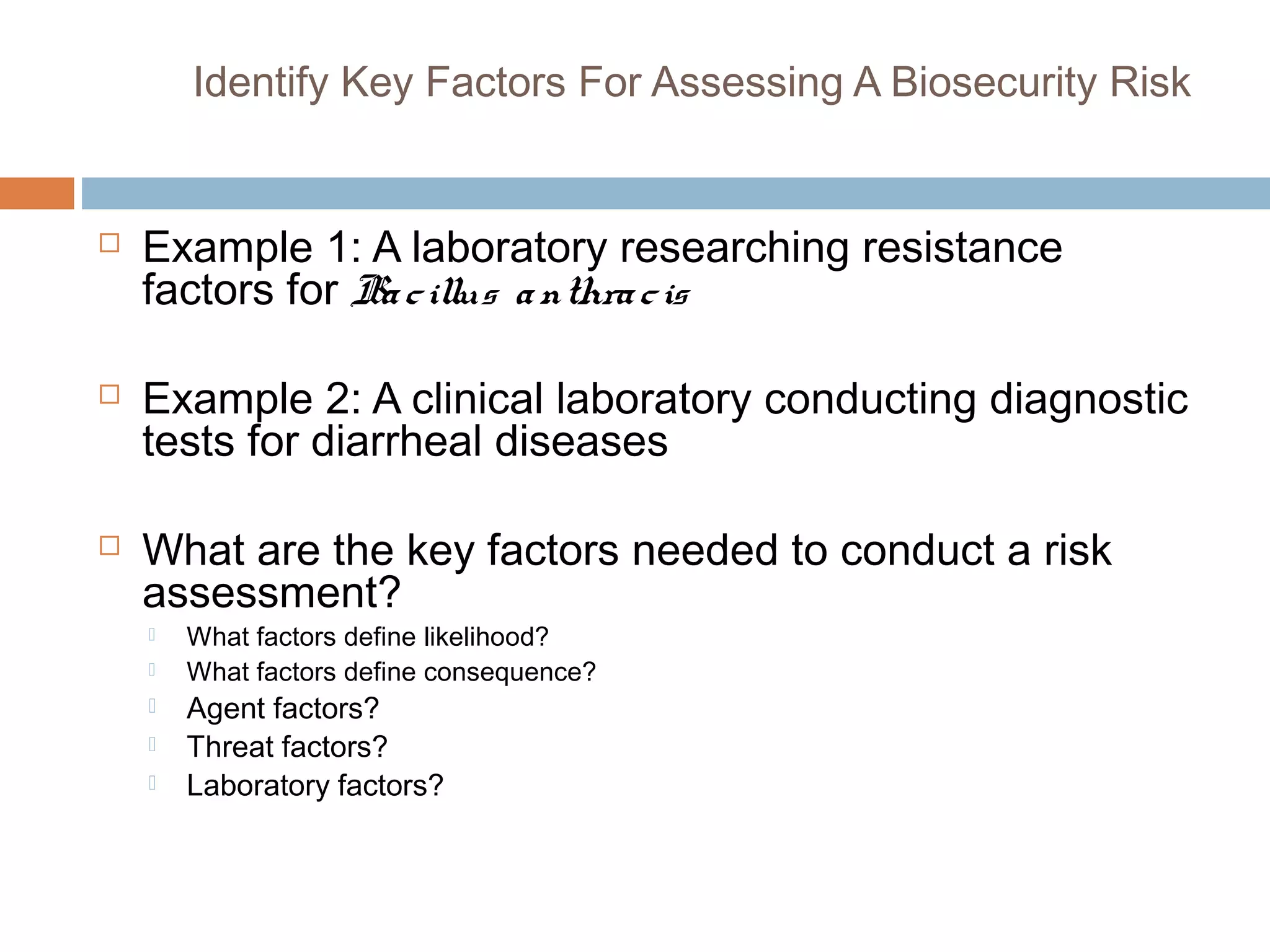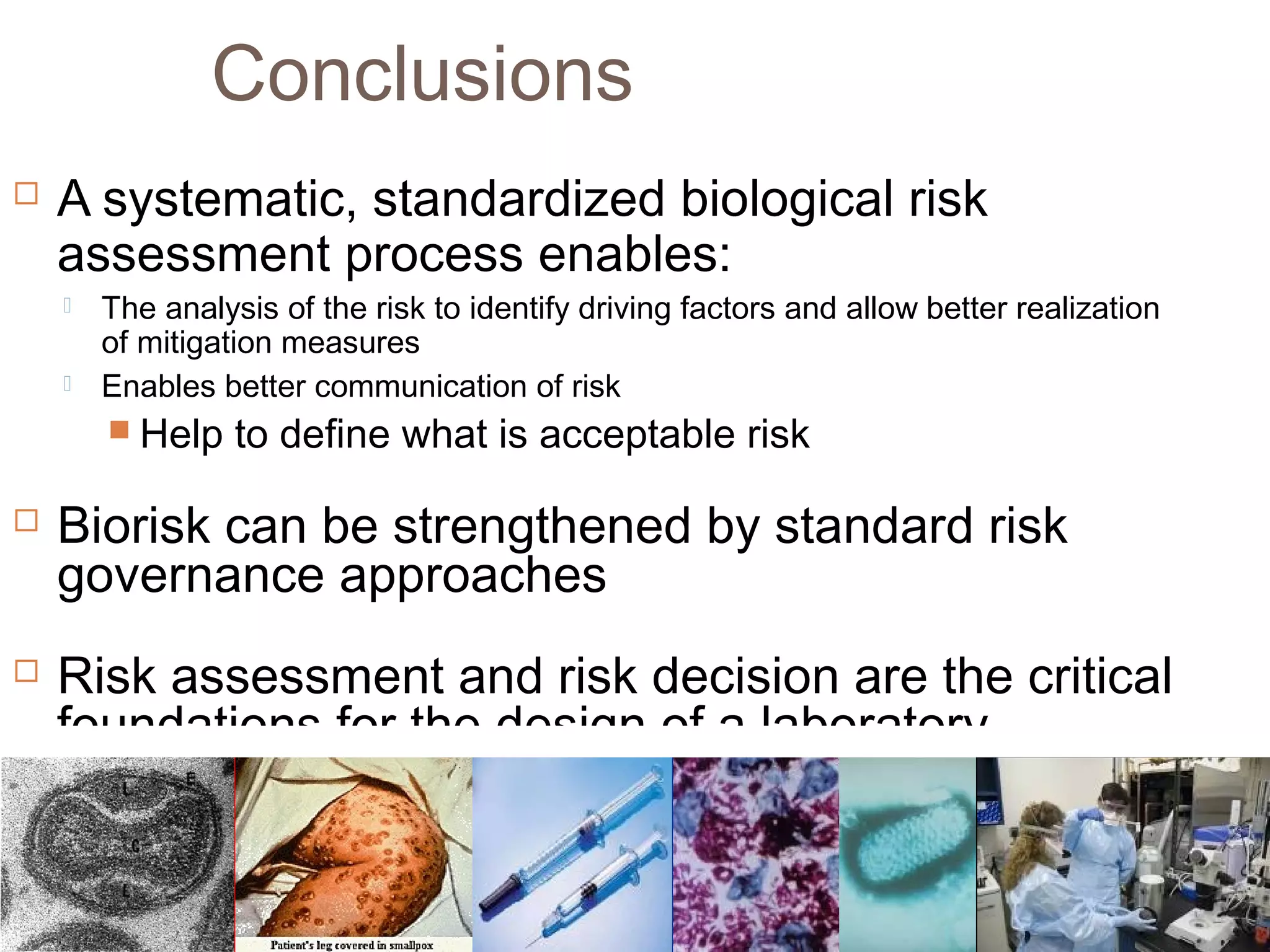This document discusses dangerous substances and risk assessment. It defines dangerous substances as liquids, gases or solids that pose risks to worker health or safety. The document outlines a 5-step process for risk assessment of dangerous substances: 1) identify hazards and those at risk, 2) evaluate and prioritize risks, 3) decide on preventive actions like elimination or substitution, 4) take action, and 5) monitor and review the assessment. The goal of risk assessment is to protect workers from harm by implementing controls for dangerous substances in the workplace.
